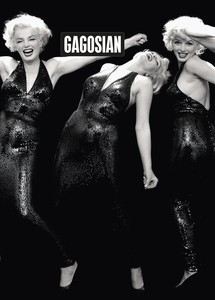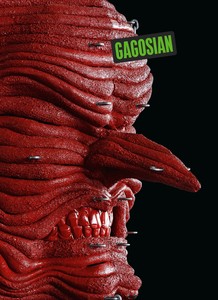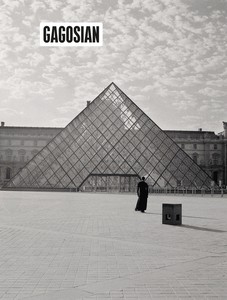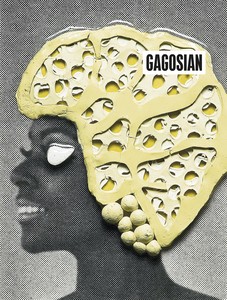
Now available
Gagosian Quarterly Summer 2023
The Summer 2023 issue of Gagosian Quarterly is now available, featuring Richard Avedon’s Marilyn Monroe, actor, New York, May 6, 1957 on its cover.
Gagosian Beverly Hills is pleased to present “Birds of the West Indies,” an exhibition of new work by Taryn Simon.
In 1936, American ornithologist James Bond published the definitive taxonomy Birds of the West Indies. Writer Ian Fleming, an active bird watcher, appropriated the author’s name for his own now famous novels. He found the name “flat and colorless,” perfectly suited for a character intended to be “anonymous…a blunt instrument in the hands of the government.” This co-opting of a name was the first in a series of substitutions and replacements that would become central to the development of the Bond narrative.
Conflating Bond the ornithologist with Bond the secret agent, Taryn Simon uses the title and format of the ornithologist’s taxonomy for her own two-part body of work, Birds of the West Indies (2013–14). The first element of the work is a photographic inventory of the women, innovative weaponry and luxury cars of Bond films made over the past fifty years. The resulting images comprise an index of interchangeable variables used in the production of fantasy. Testing the seductive surfaces of popular cinema, Simon continues her artistic process of revealing infrastructures of previously impervious cultural constructs. Simon also created a film that takes as its subject Nikki van der Zyl, the most prolific agent of substitution in the Bond franchise. From 1962 to 1979, van der Zyl, an unseen and uncredited performer, provided voice dubs for over a dozen major and minor characters throughout nine Bond films. Invisible until now, van der Zyl further underscores the interplay of substitution and repetition in the preservation of myth and the construction of fantasy.
In the second element of the work, Simon casts herself as the ornithologist James Bond, identifying, photographing, and classifying all the birds that appear within the 24 films comprising the James Bond film franchise. Often the birds are incidental; they function as background for the sets they happened to fly into. Simon analyzed every scene to discover these chance occurrences. The result is a taxonomy of birds not unlike the original Birds of the West Indies. In this case, the birds are categorized by locations both actual and fictional: Switzerland, Afghanistan, North Korea, as well as the mythical settings of Bond’s missions, such as the Republic of Isthmus and SPECTRE Island. Simon’s discoveries often occupy a liminal space—confined within the fictional space of the James Bond universe and yet wholly separate from it. In their new static form, the birds often resemble dust on a negative, a once common imperfection that has disappeared in the age of Photoshop. Other times, the birds are frozen in compositions reminiscent of different genres from photographic history. Some appearing as carefully conceived still lifes, while others have a snapshot quality. Many look low-res or obscured, as though photographed by surveillance drones or hidden cameras that might have been used by MI6 within the context of the films.

The Summer 2023 issue of Gagosian Quarterly is now available, featuring Richard Avedon’s Marilyn Monroe, actor, New York, May 6, 1957 on its cover.

The Fall 2022 issue of Gagosian Quarterly is now available, featuring Jordan Wolfson’s House with Face (2017) on its cover.

This spring, as part of the Lambert Family Lecture Series at the Wexner Center for the Arts, Taryn Simon joined Teju Cole for an online conversation about her artistic practice and creative process.
In Taryn Simon’s performance work An Occupation of Loss (2016), professional mourners enact rituals of grief, simultaneously broadcasting their lamentations from within a sculptural installation. This video by filmmaker Boris B. Bertram documents the April 2018 performance of this work with Artangel in Islington, London.

Joshua Chuang, the Robert B. Menschel Senior Curator of Photography at the New York Public Library, discusses the institution’s singular Picture Collection, the artist Taryn Simon’s rigorous engagement with it, and four instances of its little-known role in the history of art making.

The Summer 2021 issue of Gagosian Quarterly is now available, featuring Carrie Mae Weems’s The Louvre (2006) on its cover.

James Lawrence explores how contemporary artists have grappled with the subject of the library.

The Summer 2019 issue of Gagosian Quarterly is now available, featuring a detail from Afrylic by Ellen Gallagher on its cover.

Two immersive installations by Taryn Simon presented at MASS MoCA in 2018–19 examined the rituals of cold-water plunges and applause. Text by Angela Brown.

Meredith Mendelsohn discusses the impact of Free Arts NYC and its mission to foster creativity in children and teens, on the occasion of its twenty-year anniversary.

Taryn Simon’s 2016 exhibitions spanned the globe. Angela Brown brings us highlights from six museums.